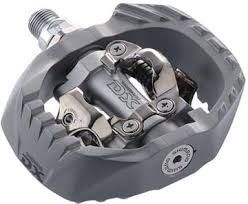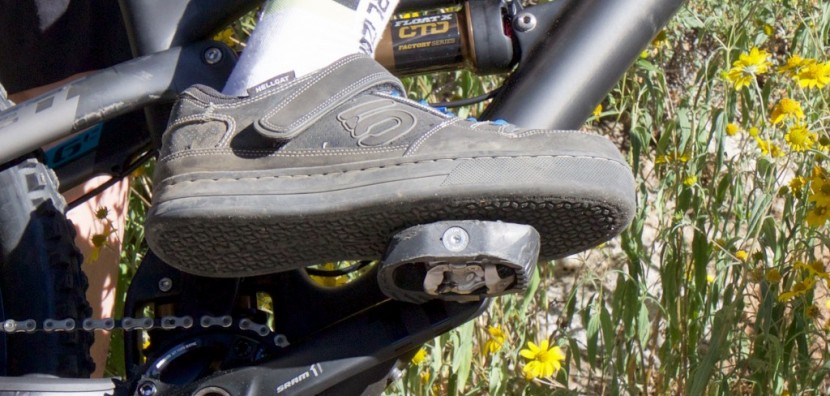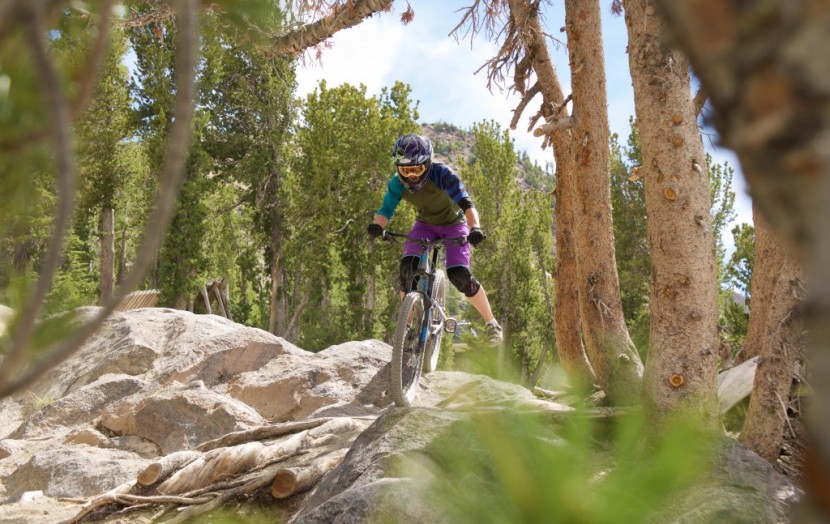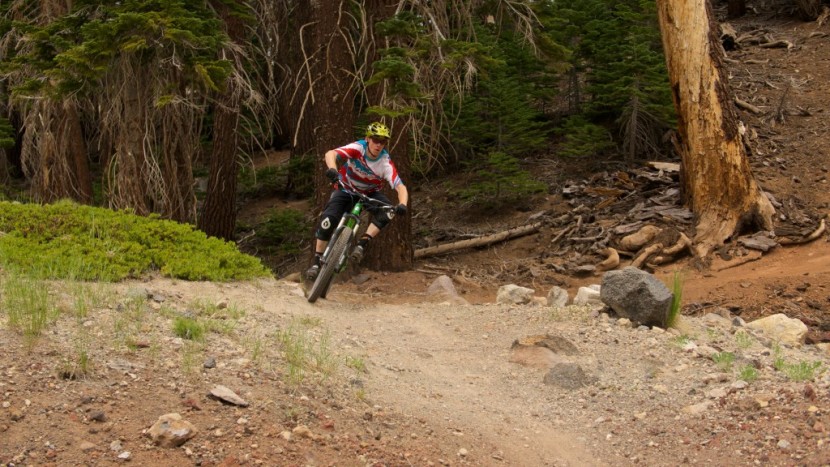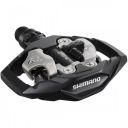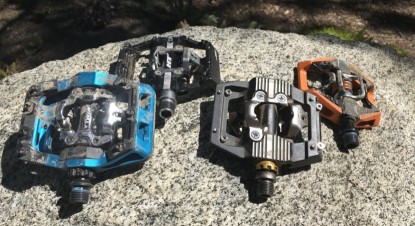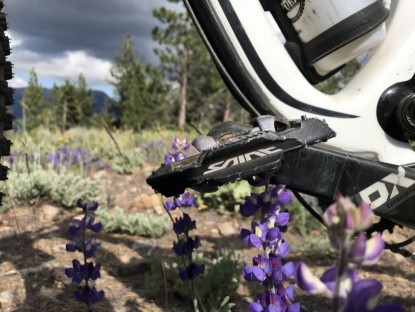Shimano DX M647 Review

Our Verdict
Our Analysis and Test Results
The DX is Shimano's version of a full platform clipless pedal. Though we like the adjustability and ease of use of SPD pedals, we think this version is unnecessarily heavy, clunky, and expensive. We recommend a Crankbrothers model for downhilling instead of these.
Ease of Entry
This pedal is easy to get into. The cage floats around the clip-in mechanism, which helps you line up the front of the cleat first, and that is how you need to clip into SPD pedals.
Ease of Exit
The cage doesn't really interfere with clipping out of this pedal, and we think it is easy to get out of. There are no adjustable metal traction pins on the DX. The platform is made from a dense plastic with some raised ridges that don't interfere with unclipping. The raised areas also don't add much in the traction department.
(Side note: this is the pedal that Ratboy's (Josh Bryceland) foot slipped off of when he broke it after airing to flat in the 2014 World Championships in Hafjell.
Adjustability
Like with all Shimano pedals the tension on the clip-in mechanism is adjustable. This is an advantage of this pedal over the Crankbrothers models, which don't feature adjustable tension. We'd like to see traction pins which can be used to fine tune the feel of a pedal with certain shoes.
Weight
Not for the gram-counters, this is the heaviest pedal in our test. On our scale, the DX weighed in heavier than the claimed weight by almost 10 grams. The pair is 90 g heavier than the next heaviest model, the Mallet DH.
Platform
We don't like the thick and clunky platform on this pedal, and would much prefer the thinner profile of either of the Mallet models. There are no traction pins, so you don't get the frictiony feel of a flat pedal like you do with all the other full platform pedals in our review.
Mud Shedding Ability
SPD pedals don't shed mud quite as well as Crankbrothers pedals, and the floating cage on the DX doesn't really help that either.
Durability
The cage on this pedal is made of plastic, which usually isn't the most durable. However, the plastic is very dense and has taken some heavy hits by our testers, so we actually think they will hold up for a while. Our experience with Shimano pedal internals is that you just can't kill them. We wish we could say the same for Crankbrothers pedals.
Best Applications
We can't really think of a good application for this pedal. It is much too heavy to be used for any significant pedaling, and for downhill you are better off with the Crankbrothers Mallet DH Race or the Mallet 3. It is telling that the only riders in the World Cup using this pedal are sponsored by Shimano. Everybody else uses Crankbrothers, except for a few guys on HT.
Value
The DX M647 costs $10 more than the Mallet 3, but the performance lags behind the Crankbrothers models. In light of that, we do not think this pedal is a good value.
Conclusion
This pedal has been around for a long time, and it feels outdated when compared to other manufacturer's offerings. Shimano needs to up its downhill clip-in game. We've heard rumors and seen some spy photos that the company is developing something new and better, but we haven't seen anything for sale yet. Until then, we would recommend the Crankbrothers Mallet 3 over these.
Recommended Pairing
Shimano designed this pedal to be worn with the Shimano DX shoe. Put a pair on your eight inch DH bike and get gnarly.
Other Versions and Accessories
Shimano M530
- Cost - $69
- They are very easy to get in and out of
- Earned our Editors' Choice Award
- Least expensive offering in the the mini-platform pedal category
Shimano M520
- Cost - $45
- Incredibly durable, versatile, has adjustable tension
- We give it our Best Buy award


